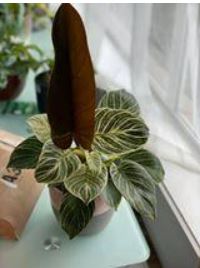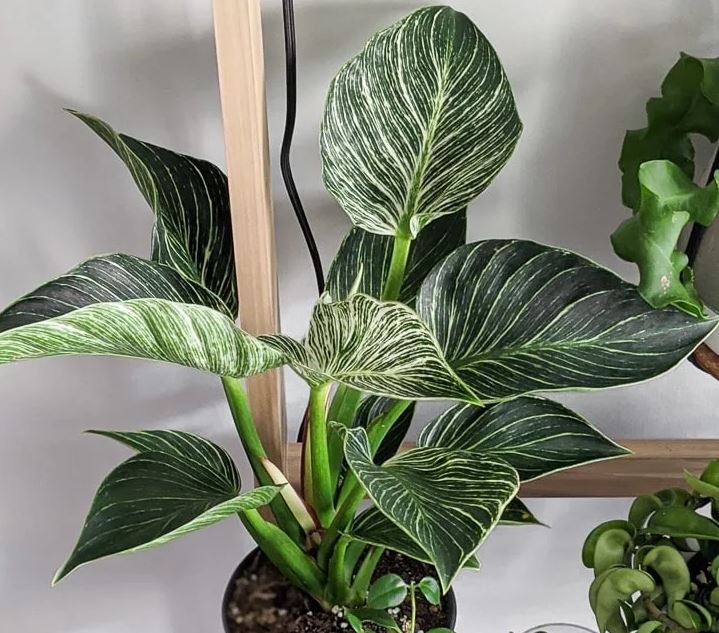
Philodendron Birkin has a really interesting background. It is the mutant offspring of Philodendron Rojo Congo, which itself was developed in Florida, USA in 1996 from a cross between Philodendron Imperial Red (mother) and Philodendron Tatei (father).

Plant and image credit Australian Plants Online

Plant and image credit Garden.org
The idea of producing P’ Rojo Congo was to achieve a new and distinctive plant with the following features:
- self heading (sends out leaves from a central point at the base)
- not vining
- self supporting
- mostly upright
- outward spreading
- open form
- vigorous growth
- large, thick leaves
- very dark green leaves
- thick, dark purple-brown petioles (the stalk that joins a leaf to a stem)

Plant and image credit Houseplant Jungle 2021
The P’ Birkin was observed in the developer’s nursery and was separated off from the mother plant. From there it was propagated and seemed to be relatively stable – and the word to keep in mind here is ‘relatively’.
The P’ Birkins that you see in the stores have been reproduced by tissue culture, which is a comparatively quick and cheap process for mass plant production. The P’ Birkin has been known to produce some interesting reversions. A reversion is when a cultivar (cultivated variety) known for a particular leaf shape or colour, reverts back to a different form which is found in the plant’s parentage.

Image credit Garden Tags.

Image credit Reddit

Image credit Garden.org
As you can see from these images, your P’ Birkin has the capacity to provide you with a distinctively different leaf. It’s not guaranteed but if and when it does does happen I do hope you will be pleasantly surprised – and not freaked out that your favourite houseplant is in decline.
Just in case you were wondering, with such sizable parentage, the answer is Yes, your Birkin can get big, under the right conditions:

Image credit Brittany Goldwyn

